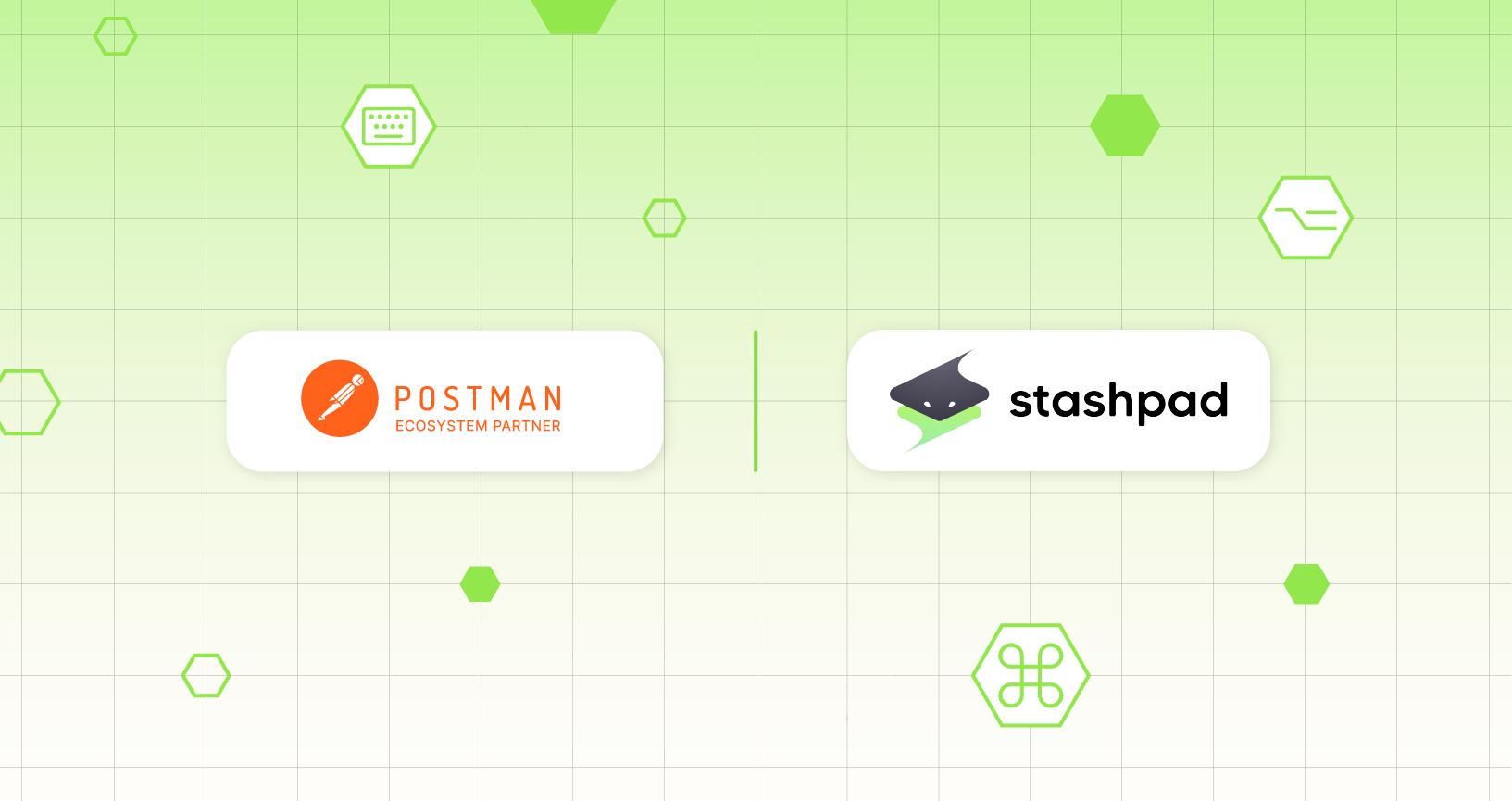Boost your productivity in Postman with these 4 keyboard shortcuts

This is a guest post written by Cara Borenstein, co-founder and CEO at Stashpad
Using keyboard shortcuts for actions that you perform frequently can help you move faster and stay in flow. Postman offers developer-friendly keyboard shortcuts that make it easier to navigate and perform common actions, but which of these shortcuts can save you the most time? The dev team at Stashpad has found that these four shortcuts have the biggest impact when they’re working in Postman.
Getting started with keyboard shortcuts
If you’re looking to boost your efficiency in Postman, start by using the app without keyboard shortcuts. Take notice of which actions you perform most often. Then, look up the shortcut for that operation, and start using it. You’ll easily remember keybindings that you use frequently.
Postman has organized their keyboard shortcuts into three categories:
- Navigation: actions that help you move across the interface more efficiently.
- Manipulation: actions that help you perform common tasks.
- Global: actions that can be accessed no matter where you are in the interface.
Across these categories, these are the keybindings that can help developers boost their efficiency in Postman the most.
1. CMD/CTRL + T: Create a new request in a new tab
Postman allows you to connect with APIs by sending requests—regardless of whether you’re building and testing your own or integrating with a third party. These requests allow you to retrieve, add, delete, or update data, and they include operations like accessing product data, logging customers into their accounts, and more.
Developers often have many tabs open at the same time, and opening up a new tab with your mouse can get tiresome. If you need to create a new request in a new tab, simply hold down CTRL and press T simultaneously. This shortcut will help you keep your hands on your keyboard and your mind on your work. Otherwise, you would need to go from keyboard to mouse, select New, followed by HTTP request—and open up the actual tab.
If you just need to open a new tab, you can select the + icon. Either way, you’ll still need to save, name, and describe your new request.
2. CMD/CTRL + Enter: Send request
Once you’ve created a new request, you still have to send it to the API. After you’ve sent the request, Postman will populate the API’s response so that you can examine, visualize, and troubleshoot it as needed.
There are several different ways to send requests in Postman. The most common is the GET method, which is typically used for retrieving data from APIs, but other methods exist as well, including:
- POST, which lets you add new data.
- PUT, which lets you replace existing data with new data.
- PATCH, which lets you update certain existing data fields while leaving others as-is.
- DELETE, which lets you delete existing data.
Whichever method you choose, sending a request in Postman is as simple as pressing CTRL + Enter on a Windows OS, or CMD + Enter on a Mac. Alternatively, you could use your mouse to open up a new tab, access the request URL, and select Send after creating your request.
3. CMD/CTRL + W: Close tab
A 2019 study done by Opensource.com showed that out of 1,514 survey respondents, 45% said they had at least 20 tabs open at any given point in time. This statistic is understandable, given the number of resources and tools that developers use every day. But tab overload can throw you off task and disrupt your flow. Eventually, some of those tabs have to go.
To close a tab in Postman, press CTRL + W simultaneously on Windows OS, or CMD + W on a Mac. Of course, you can always use your mouse to click the X symbol at the end of each tab. However, when you have too many tabs up at once, the space for selecting this icon gets smaller and smaller, increasing your chances of a misclick.
4. CMD/CTRL + (tab number): Go to tab
With so many tabs in play at once, it helps to be able to efficiently navigate to the correct one to access the resource you need—or to close the ones you don’t.
In Postman, you can use your keyboard to toggle to the tab of your choice with ease. All you have to do is press CMD/CTRL + the number of the tab you’re looking for. For instance, press CTRL + 2 to navigate to the second tab, CTRL + 3 to navigate to the third, and so on. It’s one of the more beneficial key bindings Postman offers.
However, if you lose track of which tab is which, you may waste time having to hunt through them all, which is why it’s so helpful to organize your tabs.
Right-click shortcuts
Some projects may require you to use your mouse more than your keyboard, so mouse shortcuts can be just as helpful as the most common key bindings. The following mouse shortcuts are just a right-click away:
- Duplicate your current tab by right-clicking on it.
- Close all other tabs by right-clicking on a single one.
- Copy a response by right-clicking on the request window and selecting Copy.
- Save a response by right-clicking and selecting Save.
The Postman API Platform features an extensive library of shortcuts and commands that can improve your efficiency. Check out which ones would be most helpful to you and see how you can work smarter, not harder.

Given the amount of tabs that are usually opened, wouldn’t it be better if Postman had a CTRL+TAB style similar to VSCODE, instead of jumping sequentially between tabs?